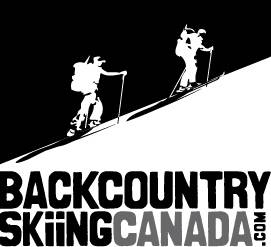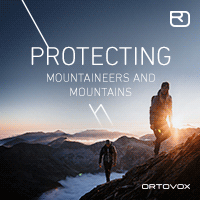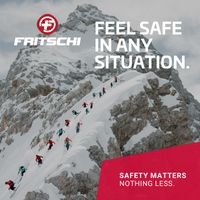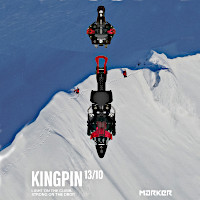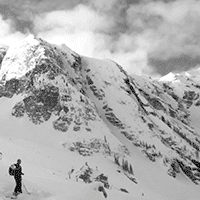BC Avalanche Conditions Update Feb 18, 2011
Avalanche Centre - Public Avalanche Warning Service
Avalanche Conditions Update
February 18, 2011
As my snowblower struggles to throw snow over the banks in my driveway here in Revelstoke, it’s hard to believe the winter actually started off slow. I say this is because, while most of the province is experiencing a pretty decent snowpack right now, the very first snow that fell last fall and the dry early winter weather that followed are still players today.
At the moment, windslabs and storm snow avalanches are the main problems in most regions. While by no means trivial issues, these are somewhat more predictable and easier to deal with than other avalanche problems. Essentially, when it’s snowing and blowing danger rises. When stormy weather stops, danger abates and generally within a few days or a week, the snowpack is significantly more stable. I’m generalizing mind you, so do check the forecast for your area at: http://www.avalanche.ca/cac/bu.....ins/latest, research local conditions, and plan your trips accordingly. You can learn more about storm snow and windslab avalanches and how to manage associated avalanche risk by going to the Decision Making section of the CAC’s website: http://www.avalanche.ca/cac/pr.....sionmaking and opening the appropriate “Avalanche Problem Essentials” document from the list on the right hand side of the page.
So, back to the very bottom of the snowpack. If you’ve been following our bulletins and previous papers about avalanche conditions, you will recall that in late October and early November a persistent weak layer (PWL) of weak, sugary snow crystals formed. In some places this layer also had a crust associated with it. This PWL is now referred to as the November facets or November crust. Initially, the November PWL was particularly troublesome in the Purcell Mountains west and south of Golden, the northern Cariboos (west and north of Blue River), and in the northern Monashees (east and north of Blue River). However, it is known to exist in at least some areas of all regions and has been a performer almost everywhere in the province at some point this season. When it became overloaded by the severe storms in January the November PWL produced many large avalanches especially in the Columbia Mountains, some of which made the mainstream news last month.
The November layer is now in a dormant phase. That means it’s still there and is still capable of producing avalanches but it has, for the most part, adjusted to the weight of the overlying snowpack, is difficult to trigger, and produces only sporadic slides. In recent weeks, the number of avalanches associated with this layer have been decreasing but when it does let go, sizes continue to be impressive. Here’s an edited excerpt from a report of a slide that occurred on February 15th near the western boundary of Glacier National Park: “Fracture line: 600 to 700 metres long and approximately 8 metres deep. Failure plane likely storm triggered a large soft wind slab, which stepped down to November basal facets. Most of avalanche ran on ground. Ran for approximately 3000 metres distance and 1350 vertical metres. Debris 500 metres long in lower gully and then 1000 metres down canyon. Widest estimated measurement of avalanche debris 200 metres, depth of debris approximately 25 to 30 metres. Took out approximately 20 hectares of forest.” This the most extreme example of a number of slides in the in the last couple of weeks that continue to demonstrate the potential of the November PWL and serve as a reminder that we should all keep this layer in mind while travelling in the backcountry this season.
We are now in what is commonly referred to as a “low probability/high consequence” scenario. The number of avalanches this layer produces are few, the chance of triggering it is low, but the consequences if caught are high: these large events are essentially un-survivable. The Decision Making web page mentioned above has an Avalanche Essentials document that discusses deep persistent slabs in more detail and that’s worth reading if you are not familiar with PWLs and PWL risk management. While the current problem is different than what we experienced in the last few seasons, reading the following papers from previous years can help develop your knowledge:
http://www.avalanche.ca/cac/li.....Lpaper0708
http://www.avalanche.ca/cac/li.....Lpaper0910
Here’s some tips to help minimize the chance of getting mixed up with this problem:
1) Watch for “hot spots”: Check avalanche forecasts, get local information, and keep an eye out for big, deep avalanches.
2) If large deep slides are happening, even if isolated or sporadic, get as much information as possible about:
a) Terrain: aspect, elevation, incline, terrain feature, etc.
b) Snowpack: windloaded, shallow, variable depth, wet, etc.
c) Trigger: cornice fall, a step down avalanche, a sledder, a skier, sun hitting the slope in the morning?
d) Weather: snowfall, wind, temperatures (especially raid rise or fall), solar radiation, etc.
3) Plan your trip to avoid places, times, or situations where you might encounter the kind of terrain, snowpack, triggering mechanism, or weather associated with recent deep slab activity.
I’ve been watching this layer pretty carefully and here’s what I’m thinking for my personal risk management plan. It seems there’s been less action on this layer in the South Coast, the south-eastern section of the North Coast region, the Monashees south of Clearwater, the Kootenay-Boundary, and the South Rockies. The South Rockies are currently on the mend from a significant snowfall so for the next few days, be aware of lingering storm snow and wind slab problems there. I’m not saying these areas are 100% safe, the November layer most certainly exists in these areas and there may be other, less severe problems. Nor am I saying it’s unsafe to go to other regions, there are certainly places there where you can ride safely. But, if I were in the mood to push out a bit, I’d head to the areas mentioned above rather than others where the problem has been more pronounced. No matter where I go, I’m going to be more careful in alpine areas above treeline. When in the alpine I’m avoiding:
- Shallow or variable depth snowpacks: places where the terrain looks rough; where rocks, brush, or small trees are showing; or where there are obvious deeper areas with shallower spots nearby.
- Windloaded areas where windslabs (firmer, harder snow overlying softer, weaker layers) are likely to exist.
- Slopes with cornices above.
- Unsupported slopes, for example those with a thicker snowpack high on the slope and thinner areas below or where a pronounced drop or cliff produces a discontinuity in the snowpack.
- Steep sunward aspects when solar radiation is strong and more so if the snow starts to feel sticky or wet.
- Places where rapid warming or cooling is occurring.
- All avalanche terrain during and for a two or three days after a storm. Maybe a bit longer if there was a lot of wind during the storm.
At and below treeline, I’m going to be looking up a lot so I can eliminate or at least minimise my exposure to alpine terrain above with these characteristics. And I plan to re-evaluate all this in the spring when it warms up—that’s when this kind of layer often comes out of hibernation and surprises people.
The long range weather forecast indicates we might be in for a cool to cold, calm, dry spell for a while. If this occurs, the November layer will likely remain in a dormant phase and might, in fact, become even less active than it is now. Keep in mind that people tend to make more aggressive decisions on bluebird days and that, as more and more slopes get chewed up, there’s a tendency to push farther and farther into more aggressive, marginal terrain to get fresh tracks. This often puts you right into places where you really don’t want to be when dealing with a dormant PWL in a low probability/high consequence scenario.
At the Public Avalanche Warning Service here at the CAC we are moving the deep persistent weak layers down, and in some cases, off our list of primary concerns and problems (not without some trepidation, I have to admit). You’ll probably see less mention of them in our forecasts if current trends continue, but the November facets remain a concern that we’ll keep tracking in case they wake up again.
It’s turning out to be a great winter and it’s a good time to head for the mountains in most places. Do some research to improve your understanding of PWLs, check the avalanche forecasts regularly, and develop a risk management strategy that keeps you within your personal avalanche risk comfort zone. With a bit of planning and some common sense, I think this problem is a manageable one.
Feel free to forward or repost this document. I welcome comments, suggestions, and questions.
Karl Klassen
Public Avalanche Warning Service Manager
Canadian Avalanche Centre, Revelstoke BC
250-837-2141 ext 227
